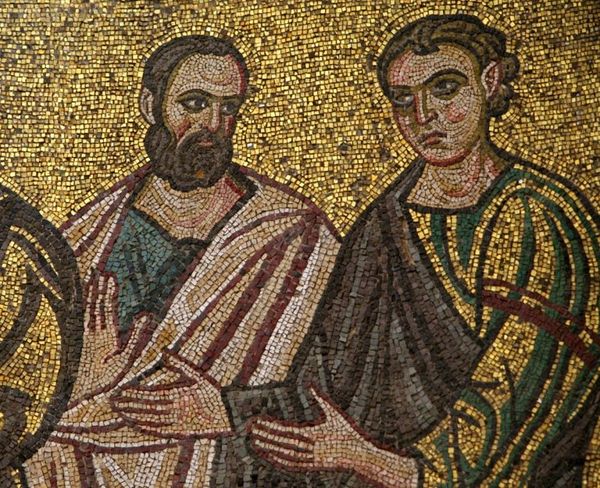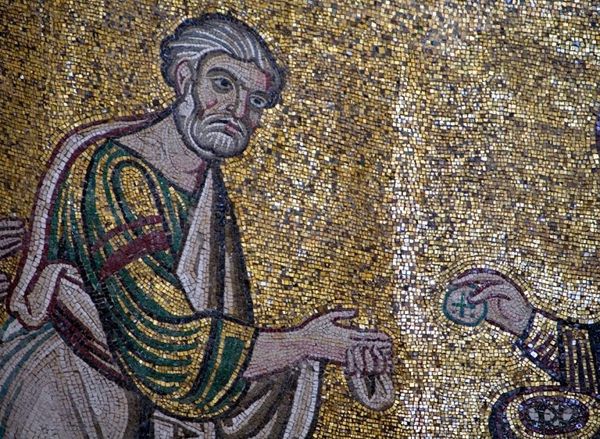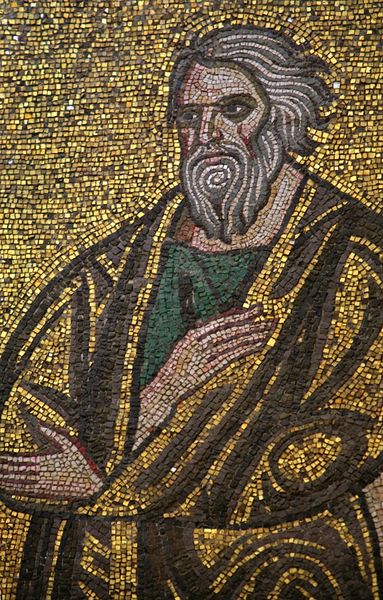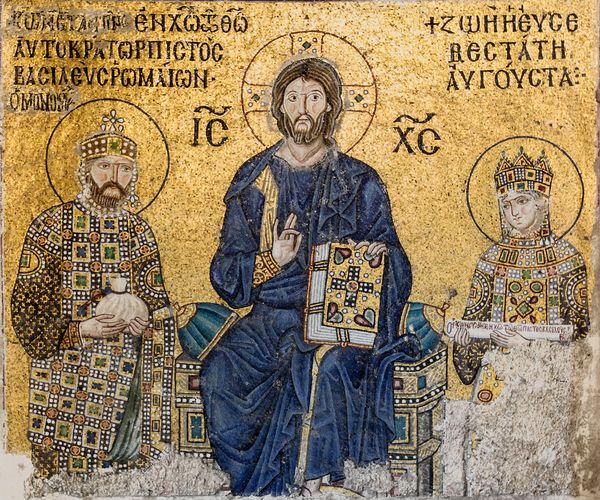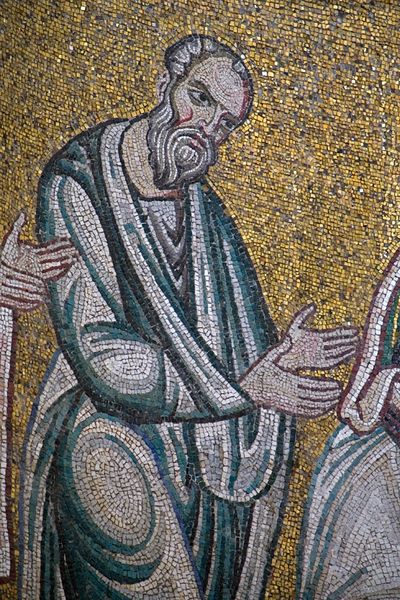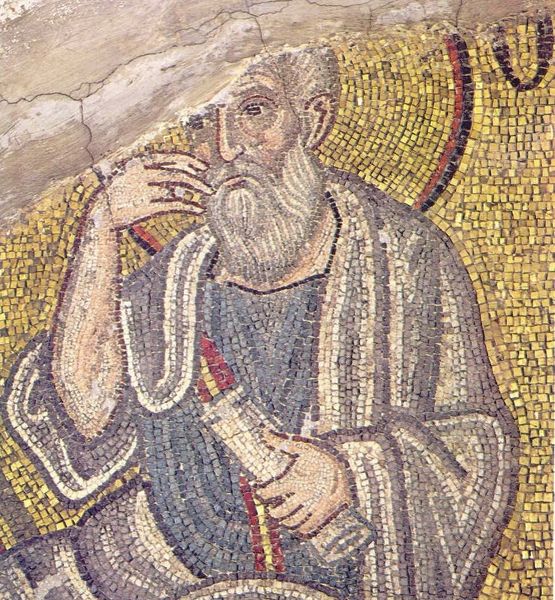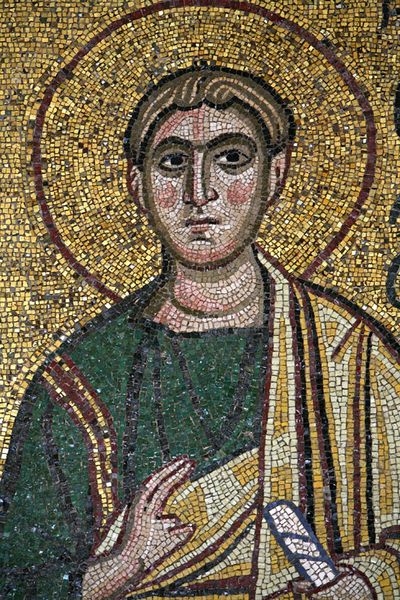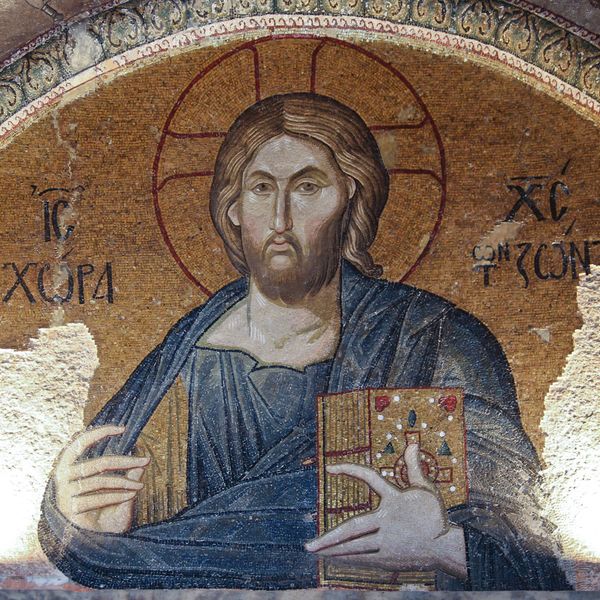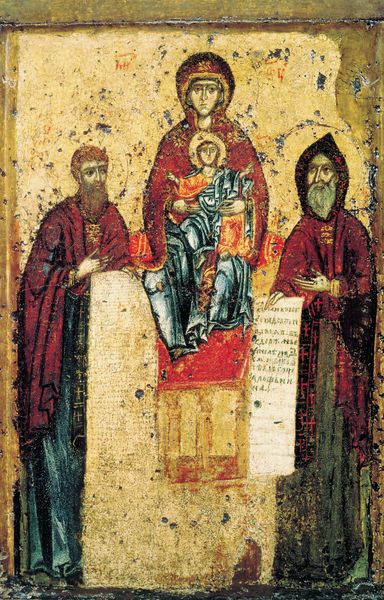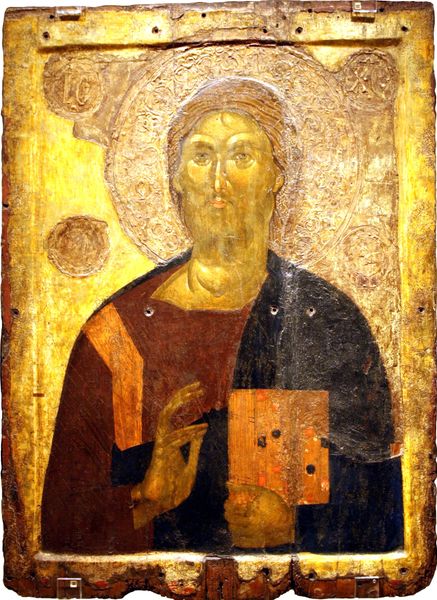
mosaic
#
portrait
#
mosaic
#
byzantine-art
#
prophet
#
holy-places
#
figuration
#
tile art
#
history-painting
Copyright: Public domain
Curator: What strikes me first is that intense gold background—it’s practically shimmering. It gives the whole scene a monumental weight, doesn’t it? Editor: Absolutely! The gold creates an otherworldly feeling. But it’s also intimate—look at the mosaic tiles and the hand-cut tesserae... There’s something profoundly human about that imperfection. It reminds me of kintsugi. Curator: A lovely observation. You're seeing an important aspect of this medium. Here we have a mosaic, specifically, part of the Eucharist Cycle found within the Saint Sophia Cathedral in Kyiv, Ukraine. Dating back to 1113, this section shows "Christ and St. Paul". Editor: Eleventh century! Imagine the faith embedded in each one of those tiny, reflective pieces, cemented together so purposefully. And the weight, you can practically feel the faith through gravity itself. Curator: The gestures here are so telling. The deliberate offering of the Eucharistic gifts contrasted with Paul’s receptive, almost pleading stance. This really speaks to the sacrament, which has different interpretations depending on the sect. But beyond the individual devotion of Saint Paul is an illustration of how Christianity had adopted older religious practices from a polytheistic point of view, and, thus, allowed a conversion away from those very practices. It's as if that symbolic act offers to those people the key to leaving polytheism behind. Editor: Right! So what exactly *are* those gifts in Christ’s hand? Curator: That's the chalice and bread, central to the Eucharist sacrament, understood symbolically as the blood and body of Christ. That symbolism goes back quite a while to pagan practices, and their blood-letting sacrifices in hope for immortality or salvation, much the same! And if we compare them to the ancient practice of votive offering, we see the same continuity to present! It's a transformation, though. Pagan practices were bloody and gruesome; those of the catholic, Byzantine art became gentle, beautiful, holy. Editor: Hmm… It does make you consider the ways belief persists across time, shaping and re-shaping. To think, this tiny little art carries all that meaning. The layers are just so beautifully dense. Curator: Yes, and ultimately it speaks to the continuous evolution of human consciousness and symbolic thought over millennia, expressed here in golden light. A truly breathtaking example of Byzantium artistry!
Comments
No comments
Be the first to comment and join the conversation on the ultimate creative platform.
